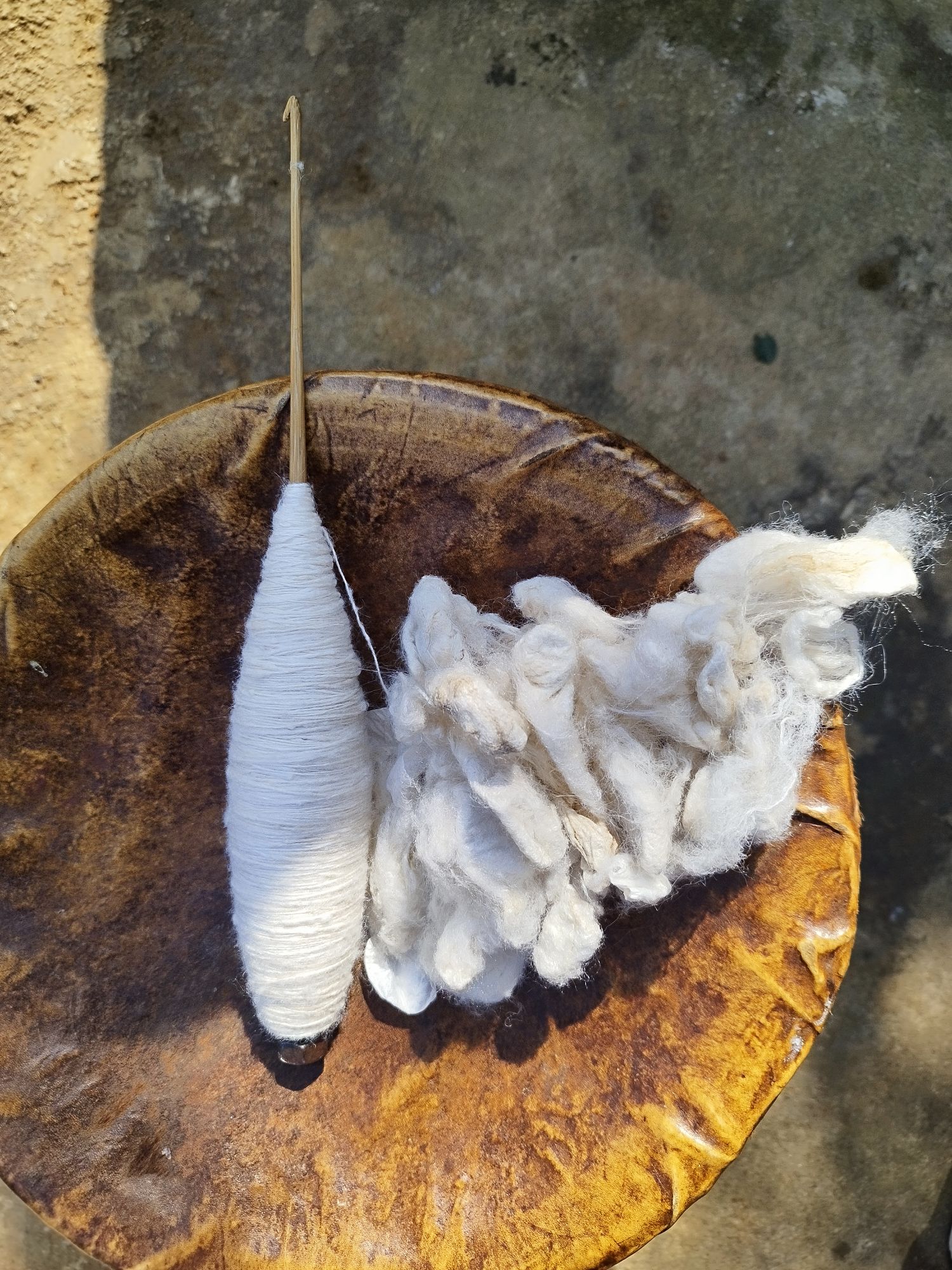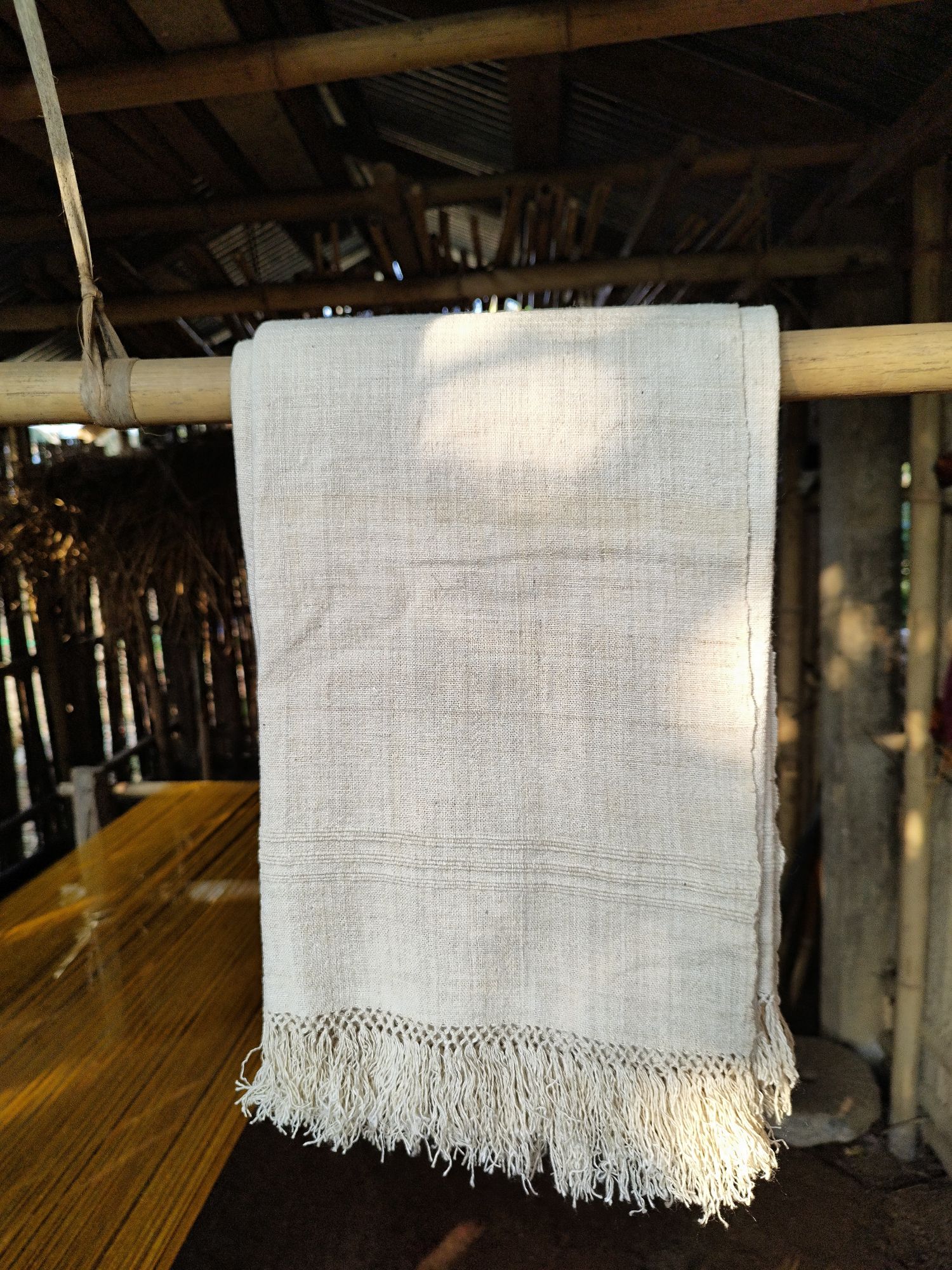Handloom: Case Study 1, Jaintia Hills
Handloom: Case Study 1, Jaintia Hills
| Main Info | ML/JH/HL/001: Traditional Knowledge on Weaving, Jaintia Hills |
| Name of the Technique | Traditional Knowledge on Weaving, Jaintia Hills |
| Source Publisher | Primary Survey, Jaintia Hills, Meghalaya |
| Source Year | 2023 |
| History Of The Technique | The Knowledge Holder aged 45 years who resides in Jaintia hills and who is a member of Iengskhem (Self Help Group) SHG Group. She owns her own Loom and has been practicing making handloom as her occupation since the year 2016 till date, she has inherited the knowledge from her family members and also acquired additional knowledge through Training from the Handloom Department, Jowai. Her other source of income is working as an Aganwadi in the village itself. On receiving training from the Handloom Department, she has received assistance and materials from the Government for her Group in order to keep themselves busy and not to stay idle. |
| Manufacturing technique | The duration taken to complete one piece of handloom is 1 day in case of a plain design and it takes more than 2 days in case of involving patch work. She involves two of her children in order to encourage them as well as the others so as to practice making handloom as their livelihood since majority of the people in the village are unaware of practicing Handloom making. They strive to work harder with regard to Handloom making in order to procure their own electrical handloom machineries to make their work easier and to be able to manufacture adequate number of finished products as per the demand. |
| Method of Preparation | 1. The yarn is kept in the swift, in order to be able to spin the yarn onto the charkha as to avoid it from getting tangled. 2. The yarn is then rolled onto the charkha wheel to obtain the wanted thread onto the bobbin. 3. The bobbin containing the yarn is then attached into the bukril and this is done if they want to mix and match threads of different colors or to make designs or no designs to their patch work. A number of 40 bobbins fits into the bukril. 4. From the bukril, the thread is inserted into the frame to continuously pull the threads to weave into deigns. 5. Then the threads are being pulled from the frame and rolled onto the nails of the drum and the drum containing the threads is continuously spun for ten rounds as to obtain a round spun ball. 6. The ball of thread which lies on the beam is then pulled and hanged onto the wrap beam of the loom. 7. The warp beam is then carried to the top of the loom and the threads from the warp beam are inserted into the heels for further weaving processes, thus the warp beam is carried back to its original place on the loom. Therefore, the final weaving process starts. |
| Material Composition | The various tools and equipments used are: i. Bobin winding ii. Bukril iii. Frame iv. Drum v. Warp beam vi. Heels vii. Reid, and viii. Cloth beam. Weaving is the process of interlacement of warp and weft (vertical and horizontal) sets of yarn. The fabrics which are weaved on the handloom are known as handloom products. As the name suggest, handloom is a loom that is used to weave fabrics using hands i.e., without the use of electricity. The foot pedals are pressed to lift the respective heddles according to the weave plan and it has to be in sync with throwing the weft of horizontal yarns across the two sections of warp yarns. Weavers continue weaving for long hours in a day which requires immense concentration and physical strength. |
| How to implement | Finished products and their prices: 1) Woolen Shawls: Rs. 1500 (Size: 40 inches), Rs. 1000 (Size: 35 inches) 2) Cotton Shawls: Rs. 300 (Size: 30 inches) 3) Cotton Bed sheets: Rs. 500 (Size: 59 inches) 4) Cotton Gamcha: Rs. 250 (Size: 35 inches) 5) Cotton Jain Kyrshah: Rs. 280 (Size: 52 inches) Market: - The finished products are marketed in the village itself or as per the orders she receives from the Government. She also markets her products at the SHG Group market whenever there is a weekly or monthly market that is organized by the SHG members. |
| New R & D leads | The problems and challenges that she and majority of the Traditional knowledge holders faced is the unavailability of Eri silk thread and this is due to the fact that the Mulberry tree does not survive under the soil conditions of the place. She had taken |
| Theme | Traditional Handloom |
| Sub Theme | Raw Materials |
| Source Publisher | Primary Survey, Jaintia Hills, Meghalaya |
| Source Year | 2023 |





